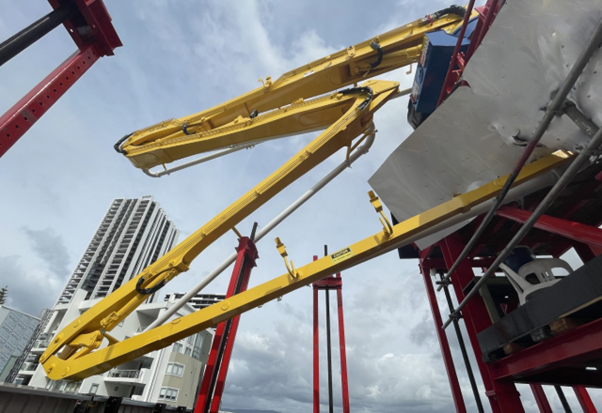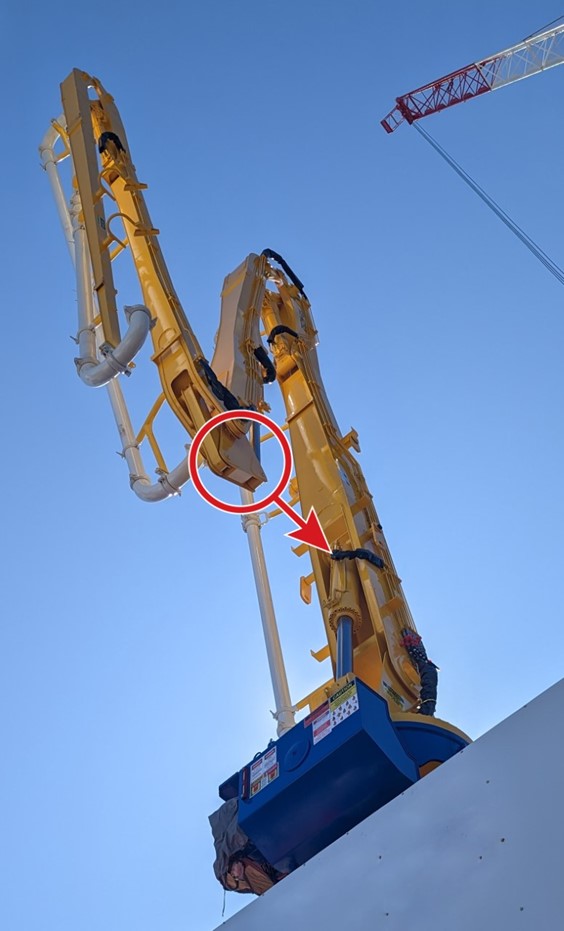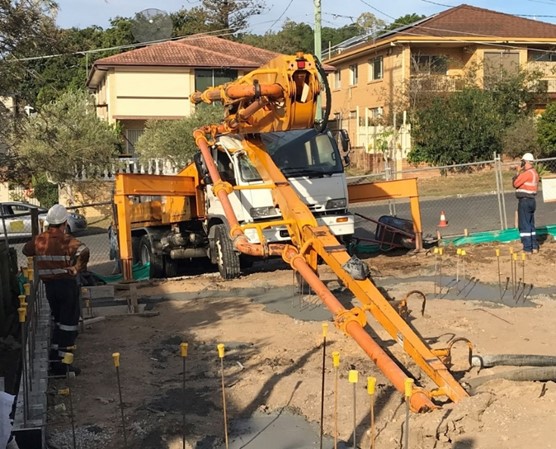Z-fold concrete placing boom safety
Concrete placing booms are extremely dangerous when they collapse. In September this year, a 28-metre Z-fold satellite (fixed) boom collapsed on a jump form at a Gold Coast construction site.
The boom struck the supporting structure and a sign (Photo 1). The initial investigation indicates it collapsed when a counterbalance (burst protection) valve on the first stage was inadvertently knocked off during the folding process. The design of the boom allows a linkage on the end of the second boom stage to strike the burst protection valve on the main lift cylinder on the first boom stage (Photo 2).
Burst protection valves are designed to lock the boom in position when a hydraulic line ruptures, so that the boom will not drop. However, when the burst protection valve is broken off a hydraulic cylinder, the boom will drop rapidly without warning.
Photograph 1 – Satellite Z-fold concrete placing boom collapse
Photograph 2 – How a linkage can strike the burst protection on a main lift cylinder
A similar incident occurred on a 28 metre Z-fold mobile concrete placing boom in 2020 in Brisbane (Photo 3). In this incident the truck cabin was partly crushed.
Photograph 3 – damaged truck cabin on another 28 metre Z-fold boom collapse
This safety issue generally only occurs on some Z-fold booms because of their geometry and the way the booms can be folded or unfolded. The best way to address this safety issue is for booms to be designed or modified so the boom cannot contact the burst protection valves, or to fit the boom with limit switches so that this cannot occur, no matter how the boom is folded or unfolded.
In this situation, even if the operator does not follow the correct procedure, the boom cannot drop. Any modifications carried out should be carried out in consultation with the placing boom manufacturer.
Developing work procedures and providing training to avoid contact with the hydraulic system, is not the best way to address this hazard. Z-fold booms are difficult to operate because they have multiple boom sections that can be moved in complex ways. Even when an operator receives comprehensive training, they may become confused (e.g. up becomes down on the controls).


